
Updated: 01/07/2025



Updated: 01/07/2025

This guide is here to equip Call Center and Dispatch leaders with processes, tools and resources to make daily tasks easier, enhance performance, and create low effort experiences for our customers. You’ll find practical advice on structuring your team, training resources, helpful tips, and key metrics (KPIs) to track and improve success. Everything is laid out so you can quickly find what you need, making it easier to develop your team and keep things running smoothly for both your team and your customers.




TurnPoint instills a mission centric attitude throughout our family of brands.
TurnPoint Services is home to a rapidly growing portfolio of the finest service brands in America, bringing decades of experience to residential and commercial customers. Each TurnPoint brand is dedicated to turning bad days into good ones by eliminating the common frustrations often associated with service contractors no needless delays, no cutting corners, and no nonsense.
As a servant-led organization, TurnPoint prioritizes principles over policies and provides category-of-one technology and resources. This empowers brand partners to focus on their customers and employees with confidence while achieving accelerated growth.
At TurnPoint we have two missions:
1. Turn bad days into good ones
2. Make it a great day for the next person you meet

Turnpoint is a collection of local service businesses. Our company was built by partnering with and investing in the bestof-the-best in every market we serve. We enable our partner companies through a consultative management approach to remove barriers to growth and provide every team member with the opportunity to grow and develop their career.

To view the current brands in our portfolio, please visit our website: TurnPoint Brands
Our brands offer the following services: HVAC, Plumbing, Electrical, Handyman, Gas Logs, Garage Doors, Appliance Repair, New Construction, and more!

TurnPoint’s executive leadership team prioritizes the success of customers, employees, and our market leading brands above all else. Together they work to enable our brand-teams to grow, develop and make a difference in local communities across America, through attitude, tools, resources, assistance, and a supportive culture.

It’s Not About Us. The idea that it’s not about us may seem in conflict with the reputation of executive-level leadership, but that’s exactly the point. Serving, instead of commanding, TurnPoint’s executive leadership team prioritizes the success of customers, employees, and our market-leading brands above all else. TurnPoint works to enable our brand teams to grow, develop, and make a difference in local communities across America. This is accomplished through our attitude, tools, resources, assistance, and supportive culture.
A “we before me” mindset, paired with the sense of purpose to turn bad days into good ones.
That's TurnPoint.

In 2025, the Demand Handling & Demand Planning team joined TurnPoint’s Revenue Ops department, led by Matt Zoller. Collaborating with Ivy Gamboa, Joe Bradley, and Thomas Brittain, the team remains focused on delivering innovative, efficient, personalized service solutions that enhance the customer experience while driving revenue growth and conversion.
By harnessing data-driven insights and advanced technology, they are committed to setting a new standard in customer service proactively meeting evolving customer needs and contributing to the long-term success of TurnPoint.

Reach out to Anna if you:
• Want to understand KPIs and enhance performance strategies.
• Are a new leader seeking guidance on best practices and resources.
• Are working to streamline processes to create an effortless customer experience.
• Need help implementing team members’ professional development plans.
Reach out to Sunshine if you:
• Seek to understand the AI CSR journey and call flow better.
• Want to understand and utilize quality management in Talkdesk.
• Have feedback on Talkdesk apps.
• Seek guidance on leveraging technology for business goals.
• Need deeper insights into customer interactions or system performance.



What is C-4LC℠?
The Customer 4 LifeCycle is TurnPoint’s strategy for growth, aiming to:
• Create customers for life throughout TurnPoint’s family of exceptional brands
• Deliver world class customer experience in every customer interaction throughout the cycle
• Drive demand and increase yield by optimizing opportunity and execution in each stage of the lifecycle

What does each stage of the Lifecycle represent?
Each stage of the Lifecycle represents a core function essential to TurnPoint’s mission. Together, these stages form the complete customer experience journey, aiming to create customers for life. Each function has a specific outcome to achieve:
• Demand Generation: Marketing builds brand awareness and generates consumer interest in our services.
• Demand Handling: Call Center agents address consumer inquiries and "sell the appointment," ensuring a seamless start to the customer journey.
• Demand Planning: Dispatch aligns the right technician with the right job, meeting consumer needs within the expected timeframe.
• Demand Conversion: Technicians complete service visits, driving sales and creating highly satisfied customers.
• Club Members: Establishing ongoing relationships with customers to drive lifetime value through loyalty and repeat business.
• Customer Nurturing: Staying connected with consumers who aren’t Club Members, fostering repeat business and enhancing lifetime value.
• Customer Experience: The foundation of everything we do, ensuring every interaction turns bad days into good ones for our customers.

The Net Promoter Score is an index ranging from -100 to 100 that measures the willingness of customers to recommend a company’s products or services to others. Customers are surveyed on one single question. They are asked to rate on a scale, the likelihood of recommending the company or brand to a friend or colleague. “On a scale of 0 to 10, how likely are you to recommend this company’s product or service to a friend?” Based on their rating, customers are then classified in 3 categories: detractors, passives, and promoters.

‘Detractors’ gave a score lower or equal to 6. They are not particularly thrilled by the product or the service. They likely won’t purchase again from the company and could potentially damage the company’s reputation through negative word of mouth.

‘Passives’ gave a score of 7 or 8. They are somewhat satisfied but could easily switch to a competitor’s offering if given the opportunity. They probably wouldn’t spread any negative word of mouth but are not enthusiastic enough about your products or services to promote them.

‘Promoters’ answered 9 or 10. They love the company’s products and services. They are the repeat buyers; the enthusiastic evangelist who recommends the company’ products and services to other potential buyers.
NPS is determined by subtracting the percentage of customers who are detractors from the percentage who are promoters. At one end of the spectrum, if when surveyed, all the customers gave a score lower than or equal to 6, this would lead to an NPS of -100. On the other end of the spectrum, if all the customers were answering the question with a 9 or 10, then the total Net Promoter Score would be 100.

Promoters are great, but for every 1 detractor they tell 10 people. Following up with detractors is essential for positioning the brand as customer centric. Personal responses, acknowledgment of concern, and acting make customers feel valued. It is important to respond quickly and resolve complaints, so they become promoters
The Qualtrics platform positions TurnPoint brands to do in-cycle surveys that will generate a better Customer for Life Cycle value by uncovering trends, patterns, and key drivers of our customer experience via predictive intelligence engine. For more information including Training & FAQ’s check out the Qualtrics folder in the Appendix (Page 61)
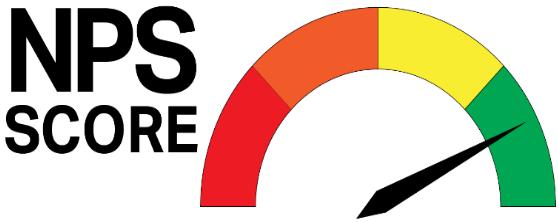

In today’s market, delivering an effortless customer experience is essential for call centers, especially as customers interact through phone calls, online platforms, and text or email. Customers expect fast, seamless service with minimal effort, regardless of the channel they choose. A key strategy to meet these expectations is by empowering agents to take control and make decisions independently.
An effortless experience ensures customers put forth minimal effort to meet their needs, with businesses meeting them wherever they are. This approach not only enhances service efficiency but also fosters customer satisfaction and loyalty cornerstones of any successful business. To create truly effortless customer experience, implement the following:
1. Ease of Interaction: Customers should be able to get help easily, whether through clear IVR options, userfriendly self-service options, or speaking directly to an agent through SMS or email.
2. Quick Resolution: Resolve issues quickly—ideally, on the first contact.
3. Consistency: Customers value reliability. They should receive the same high-quality service every time no matter how they engage with your company.
4. Tools and Resources: Ensure agents have access to all necessary resources, customer history, scheduled jobs, and scripts and guidelines for waiving fees and offering discounts.
5. Monitor and Improve: Continuously review customer interactions and gather feedback to refine processes and improve service quality.
1. Rebuttal Scripts: Provide agents with clear rebuttal scripts for addressing customer objections or questions confidently. These scripts should be adaptable to phone calls and digital conversations, ensuring consistency in tone and solutions.
2. Waiving Service Fees & Offering Discounts: Empower agents to waive fees or offer discounts based on preset guidelines. This flexibility helps resolve complaints, secure bookings, and enhance customer satisfaction.
3. Same-Day Emergency Scheduling: Allow agents to prioritize and schedule same-day emergency service requests independently
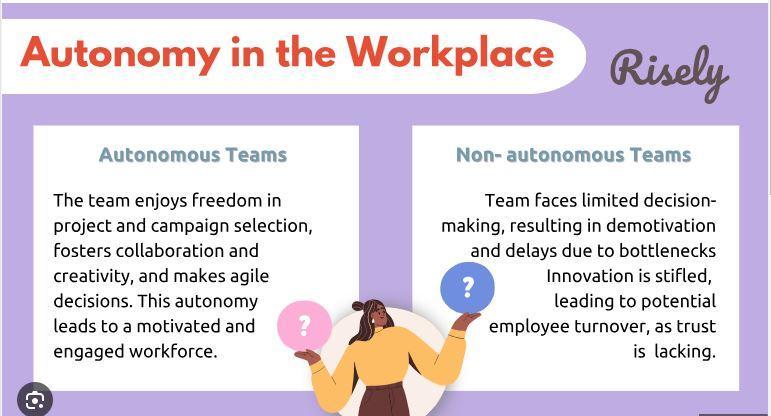
4. First Interaction Resolution: Authorize agents to resolve most issues during the initial contact, reducing the need for follow-ups and ensuring a seamless experience

5. Quick Solutions Without Transfers: With robust training and tools, empower agents to resolve customer issues without unnecessary transfers or having to call after not finding what they are looking for on our website
When our team members feel empowered, they can make decisions that benefit both the customer and the company, leading to more effortless and satisfying interactions that increase customer loyalty.



The Call Center serves as the catalyst for building and strengthening customer relationships. As the frontline of customer interactions, Call Center Agents play a pivotal role in delivering an effortless Customer Experience one that is seamless, increases customer satisfaction, and cultivates loyalty.
Key priorities for success include:
1. Delivering a Consistent 5-Star Customer Experience, ensuring every interaction is simple and leaves a positive, lasting impression.
2. Enhancing First Call Resolution Rates, solving customer issues quickly and effectively during the initial contact.
3. Driving Growth through Proactive Outbound Efforts, creating opportunities to engage customers and meet their evolving needs.

Call Center roles should be clearly defined by job duties. Hiring based on talent, abilities, and specific job descriptions is vital. Competitive wages, bonuses, and commissions attract the right talent. The agent creates the customer’s first impression, making their role critical. For smaller brands, roles can be combined until growth supports a larger workforce.

Customer Service Representative
A customer-focused, dependable, outgoing individual. Reporting to the Call Center Manager, this role is responsible for delivering exceptional service through a variety of communication channels including phone, chat, email, and text. CSRs play a vital role in creating seamless customer experiences, booking appointments, resolving issues, and booking appointments with accuracy and empathy. The ideal candidate is tech-savvy, quick-thinking, and passionate about making a positive impact on every customer interaction.
Essential Duties & Responsibilities:
• Respond to inbound customer inquiries across multiple channels (phone, chat, email, and text) with professionalism and care.
• Conduct outbound calls to follow up on customer inquiries and schedule appointments.
• Engage in digital communication efforts as needed, including Texting & Chat platforms to assist customers and promote services.
• Book service appointments and accurately input customer and job details using Service Titan.
• Follow internal processes and scripts to meet company standards.
• Monitor personal performance metrics and strive to meet or exceed booking and customer satisfaction goals.
• Contribute to a supportive team culture by sharing insights and best practices with peers.
Digital Support Specialist
A dedicated and detail-oriented individual. The Digital Lead Specialist will be responsible for managing and nurturing digital leads from various lead generator platforms, ensuring adherence to established processes to meet company goals. This role requires an individual who can effectively communicate with potential customers, follow scripts and guidelines, and collaborate with internal teams to convert leads into booked jobs. The Digital Lead Specialist will support our sales and service teams by ensuring that every lead is handled efficiently and effectively, contributing to overall business growth.
Essential Duties & Responsibilities:
• Manage and respond to incoming digital leads promptly from multiple lead generator platforms.
• Follow standardized scripts and processes to handle leads, ensuring consistency in communication and customer service.
• Enter lead information accurately into CRM systems and ensure all data is up-to-date and properly documented.
• Collaborate with relevant internal teams to ensure a smooth transition from lead to booked job.
• Monitor lead status and follow up as needed to ensure timely conversion.
• Provide feedback on lead quality and process improvements to supervisors.
• Stay informed on company services, promotions, and updates to provide accurate information.
• Assist with reporting and tracking lead performance metrics.
Membership Sales Specialist
We are looking for an enthusiastic and driven Membership Sales Specialist. This position, reporting to the Call Center Manager, will serve as the bridge between our company and our priority service customers. The ideal candidate will excel in positive client interactions and take responsibility for assigned sales and retention initiatives. Our aim is to expand and sustain our valued membership base through sales, renewals and retention efforts.
Essential Duties & Responsibilities:
• Initiate outbound calls and digital communications to existing customers to discuss the benefits of our maintenance membership programs and schedule service appointments.
• Clearly articulate the advantages of our maintenance agreements, such as cost savings, priority service, and extended equipment lifespan, to encourage enrollment and retention.
• Accurately update and maintain customer information in our Customer Relationship Management (CRM) system, ensuring data integrity and confidentiality.
• Consistently meet or exceed sales targets and retention goals established by the management team, contributing to the overall success of the membership program.
• Address customer concerns and resolve issues promptly, maintaining a high level of customer satisfaction and fostering long-term relationships to increase membership retention.
• Other duties as assigned by the Call Center Manager.

A people-first, service-minded professional. Reporting directly to the Call Center Manager, this role is focused on supporting and developing the customer service team by providing coaching, guidance, and daily leadership. The ideal candidate is passionate about helping others grow, fosters a positive and inclusive culture, and leads by example to ensure both team success and excellent customer service.
Essential Duties & Responsibilities:
• Support the Call Center Manager with hiring, training, and onboarding new Customer Service Representatives.
• Coach and mentor Customer Service Representatives to support their growth, confidence, and skill development.
• Provide real-time guidance and support to agents during calls, questions, or customer escalations.
• Monitor real-time call queues to ensure customers are served promptly and call abandonment remains below company standards.
• Use KPIs to guide development conversations, celebrate wins, and offer constructive feedback in one-on-one and team settings.
• Support interdepartmental communication with Dispatch, Sales, Field Leadership, and General Managers to ensure a seamless customer journey.
• Help identify process improvements or recurring challenges and share insights with the Call Center Manager.
• Step in to take calls or assist with daily operations during peak times or when coverage is needed.
A highly motivated professional. This role holds a central position within our organization, focusing on enhancing customer satisfaction and fostering revenue growth through thoughtful management and strategic leadership of our call center operations. We're seeking an individual who values relationships, sets achievable goals, and is dedicated to achieving results while ensuring smooth workflows and exceptional customer service. The Call Center Manager will collaborate closely with the General Manager to meet daily revenue goals, promoting a positive and high-performance team culture. Moreover, this role will actively contribute to a supportive peer network, encouraging collaboration on best practices for continuous improvement within our call center operations.
Essential Duties & Responsibilities:
• Inspire and motivate a diverse team to follow standards, book appointments, increase membership sales & provide excellent customer service.
• Ability to work interdepartmentally to achieve high customer satisfaction.
• Resolve escalated customer issues promptly.
• Establish and monitor key performance indicators (KPIs).
• Identify trends; recommend strategies; & implement objectives to drive growth & meet company goals.
• Evaluate recorded calls; conduct one-on-one regular performance reviews and mentoring sessions.
• Hire, onboard, and train cell center personnel.
• Responsible for time & attendance management to ensure staffing coverage.
• Become an expert in company services, market, & customer needs.
• Complete any responsibilities assigned by the General Manager.


The Contact Center Manager plays a pivotal role in ensuring operational excellence, customer satisfaction, and team efficiency. This document outlines the characteristics and competencies needed for individuals aspiring to thrive in this challenging yet fulfilling role.
Characteristics
Inherent traits or qualities that influence how individuals behave and interact in various situations.
1. Inspiration & Team Motivation
a. Capability to inspire and motivate a diverse team towards a shared goal.
b. Embrace a servant-leader approach, emphasizing the "why" behind actions.
2. Empathetic Leadership:
a. Understand the challenges faced by both team members and customers.
b. Develop strategies to enhance customer satisfaction and boost employee morale.
3. Analytical Problem Solving:
a. Apply an analytical mindset to identify and efficiently resolve issues.
b. Implement processes for streamlined workflow and resource optimization.

Competencies
Skills and behaviors that are observable and measurable, contributing to successful job performance.
1. Effective Communication :
a. Resolve escalated customer issues promptly.
b. Collaborate with various departments to enhance overall customer satisfaction
2. Training and Development:
a. Implement ongoing training programs.
b. Offer constructive feedback and mentorship for continuous improvement.
c. Establish and monitor key performance indicators (KPIs).
3. Technology Proficiency:
a. Stay up to date on call center technologies.
b. Utilize data analytics for decision-making and process improvement.


The role of a customer service representative can be both challenging and dynamic. Agents must skillfully balance meeting customer needs while achieving organizational goals. Each customer interaction presents unique challenges, requiring agents to possess a diverse and robust skill set to navigate varying situations effectively.
The top qualities of a call center agent include excellent communication skills, active listening, empathy, patience, problem-solving ability, knowledge retention, ability to stay calm under pressure, attention to detail, adaptability, and a positive attitude; essentially, being able to effectively interact with customers, understand their needs, and resolve issues while maintaining a friendly and professional demeanor, even in challenging situations
To support our call center agents in delivering effortless customer experiences, the following agent qualities are fundamental to this mission:
• Communication skills: Clear and concise verbal expression, ability to explain complex information simply, and actively listening to customer concerns.
• Active Listening: Fully focusing on the customer, understanding their concerns without interruption, and responding thoughtfully to ensure their needs are met.
• Empathy: Demonstrating understanding and concern for the customer's situation, even when they are frustrated.
• Problem-solving: Analyzing customer issues, identifying solutions, and effectively implementing them.
• Knowledge retention: Thorough understanding of products, services, and company policies to answer questions accurately.
• Stress management: Maintaining composure and professionalism when dealing with difficult customers or complex situations.
• Adaptability: Flexibility to handle diverse customer interactions and adjust to changing situations.



Asking the right interview questions allows you to uncover valuable information about a candidate’s skills, personality, and track record. It helps you project how they’ll perform in the role and avoid costly hiring mistakes. Focus on questions that identify candidates with a customer-oriented attitude, excellent communication skills, and the drive to meet goals. Look for candidates who thrive in a team environment and can collaborate effectively.
Below is a list of interview questions to help determine if an applicant is the right fit for the position.
1. Tell me a little bit about yourself:
2. What about this job posting that interested you enough to apply?
3. What qualities do you feel you can bring to this team/company?
4. If your current or most recent employer could describe you to me, what do you think they would say?
5. What is your greatest weakness/strength:
6. Describe quality customer service means to you.
7. In your own words, describe what it means to be a Team Player.
8. Tell me about a time you had conflict with either a customer or a co-worker, how did you defuse the situation? Was the result positive?
9. How would you handle multiple tasks and prioritize your workload in a fast-paced environment?
10. How do you handle stress and pressure in a call center environment?
11. What technology or software have you used in previous call center roles?
12. How do you handle a situation where you don't know the answer to a customer's question?
13. What qualities do you think a successful boss or leader should have?
14. What technology or software have you used in previous call center/applicable roles?
15. Is there anything I can answer?
These questions are balanced to assess both technical skills and soft skills (communication, teamwork, stress management), which is important for a customer service role. They're also open-ended, encouraging thoughtful, detailed responses.


Whether managing an in-office or remote team, keeping employees motivated is essential for success. Motivation is about more than just employee happiness it’s about engagement. Engaged employees are emotionally committed to their work and the company’s goals, which drives productivity and success. Here’s how to motivate your team, with a focus on building a positive culture and supporting remote work.
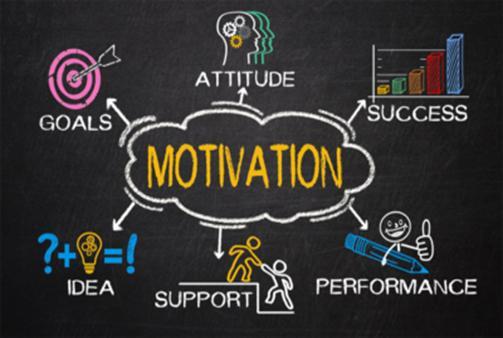
1. Lead by Example: Motivation starts at the top. If you demonstrate optimism, confidence, and a strong work ethic, your team is more likely to follow suit. Whether managing remotely or in person, embody the behaviors and values you expect from your team. Consistent leadership and clear communication, even from a distance, set the tone for a motivated and engaged workforce.
2. Communicate Regularly and Effectively: Frequent, meaningful communication is crucial, especially for remote teams. Weekly one-on-ones and team meetings ensure everyone stays aligned and connected. Use tools like Zoom or Teams to maintain communication but focus on collaboration rather than checking in just to monitor progress. Personal check-ins, in addition to professional updates, help employees feel valued and supported. This is equally important for in-office and remote workers.
3. Foster a Positive Culture: Whether your team works in an office or from home, create an environment that feels supportive and inclusive. For in-office employees, ensure the workspace is clean, inviting, and equipped with the tools they need to succeed. For remote workers, provide flexibility, trust, and support to help them maintain a work-life balance. Remote work can enhance productivity and reduce burnout when employees feel trusted and supported, so offer flexibility wherever possible.
4. Recognize Achievements: Regularly show appreciation for a job well done. Recognizing employee contributions whether through incentives, rewards, shout-outs, or company-wide announcements this helps boost morale and productivity. A simple shout-out for a job well done can go a long way in making employees feel appreciated and motivated to continue performing at a high level.
5. Encourage Feedback and Act: Make it easy for your team to voice concerns about the workplace, customer issues, or company culture, and act quickly when issues arise. This shows you value their input and are committed to improving their experience.
6. Set Clear, Smart Goals: Create measurable, attainable goals with your team’s input. Regular feedback and support help employees stay on track, motivated, and engaged in achieving those targets.
7. Celebrate Together Virtually or In Person: Social connections are important for team morale, whether your team works in the office or remotely. Virtual check-ins or in-office celebrations can bring everyone together and foster a sense of community. A strong team bond helps employees feel more connected and motivated to contribute.
8. Offer Growth Opportunities: Even in a small call center, provide avenues for career development. Regular one-on-one meetings, coaching, and clear growth paths keep employees invested in the company’s future.


No matter how much agents enjoy working in the call center, days can easily get monotonous. It’s true about any office. There are fun contests to shake up the everyday routine and increase employee engagement Contests at work are not just about fun. There are a lot of other great benefits, too:
• Morale boost: Call center contests are enjoyable. Employees will bring the joy they experience to their work.
• Increased motivation: The call center contests help improve key employee performance indicators (KPIs).
• Better team building: A lot of the contests can help strengthen workplace relationships & teamwork through friendly competition and excitement.
• Healthier workplace culture: It takes a lot of work to build the ideal workplace culture. Office contests are the perfect tools to get people together and help them relax while improving their experience at work.
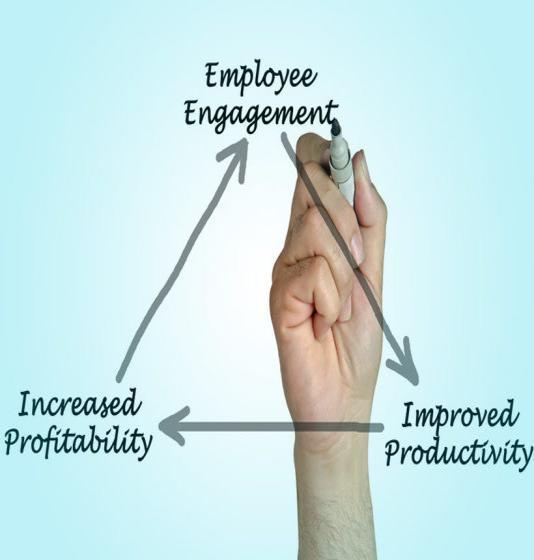
Giving away prizes helps employees enjoy the games and participate more. It also gives these office games a competitive edge. Here are some ideas for some cheap prizes for call center games: Candy Extra Break

Office supplies/Brand Swag Voucher to leave early (with pay) Cash prize/Gift Cards
Tickets to a Game or Movie

Keep in mind, these don’t have to be big prizes. Small gifts are great tokens of appreciation for hard work. The time away from work, the change of pace, and the memories are all great gifts, too!
1. Bingo: Call center bingo is the same concept as traditional bingo games. Each team member gets a bingo board with various squares on them. Players cross off the squares on their boards based on events that happen in the call center. Fill your bingo boards with KPIs you can measure. Each time an employee hits one of the goals, that person marks it off the bingo card. Once an agent gets 5 in a row, that individual yells out “BINGO!”. The first to reach BINGO is the winner. (Virtual teams put it in group chat) – Click for a free online template!
2. Pass the [BLANK]: For this call center game, you need a “trophy”. This can be a stuffed animal, a ball, or gift card prize. When someone hits a sale or a KPI, they’re the temporary winner or owner of that “Trophy”. But when another rep hits their KPI or even performs better, they get the trophy. The trophy changes owners throughout the day. Keep in mind, you can reward the owner each hour or just once at the end of the shift. The best method depends on your call center size and culture.
3. Punch-Out: Pin 20-25 Solo cups to a corkboard and then fill some of the cups with small prizes: lottery tickets, cash, wrapped candy and $5 or $10 fast food gift cards. Leave a few cups empty but also fill some shaving cream for laughs. Then, cover the cup with a tissue, using a rubber band to hold it in place. Once a rep hits their goal, they come up to the table and pick a cup to literally punch out and keep whatever they find.


Implementing Demand Handling Standards is crucial for ensuring that the call center operates smoothly and delivers consistent customer service. These standards provide a structured framework, with a leveled approach to enhance daily operations, elevate service quality, and support business growth.
Overview of the 5 Levels:
This foundational level establishes basic practices for efficiently managing calls and capturing customer demand, laying the groundwork for customer service. Key elements include:

❖ Team Setup and Structure: Organize the team to handle call volumes effectively.
❖ Optimized Talkdesk Setup: Configure the phone system for maximum efficiency.
❖ Core Call Center KPIs: Track critical metrics like % Answered by the Brand, Service Level % and Booked Jobs.
Level 2: Enhanced Performance & Technology Optimization
Focuses on improving team performance and leveraging technology to boost overall efficiency. Key components include:
❖ Leadership Development: Identify a Senior Customer Experience Specialist for leadership support during the manager’s absence.
❖ Advanced KPIs: Track metrics like Unique Booking %, Agent Utilization %, and Raw Booking % for deeper insights.
❖ Service Titan Optimization: Align job summaries, automate processes, and introduce self-service options via Service Titan’s Customer Portal.
❖ Daily Huddles: Participate in daily meetings to monitor performance and align with cross-functional teams on business objectives to win the day.
Emphasizes continuous learning and skill enhancement to ensure the team aligns with evolving goals. Key components include:

❖ KPI Tracking and Coaching: Run reports from Power BI, Talkdesk, and Service Titan for performance tracking and targeted coaching.
❖ Daily Huddles Participation: Share call center performance data in daily meetings to ensure alignment across departments.
❖ Role-Play Scripting: Implement role-play exercises with scripts to improve booking consistency.


Ensure consistency and accountability through comprehensive documentation, standard operating procedures (SOPs) and regular quality assessments. Key components include:
❖ Document Processes: Centralize documentation of all procedures using tools like SharePoint and OneNote.
❖ 1:1 Coaching: Conduct regular call evaluations and provide individualized coaching based on quality management scores.
❖ Ongoing Training: Customize and update the 10-day CSR training program to ensure all agents are aligned with current practices and processes
Focuses on leveraging advanced technology and scaling the team to meet growing demand. Key components include:
❖ Knowledge Management: Implement Talkdesk Knowledge Management for easy access to documented processes right from the Talkdesk Workforce App.
❖ Workforce Management: Use forecasting tools to predict call volumes and ensure baseline Inbound staffing levels.
❖ Specialized Roles: Introduce new roles, such as Quality Assurance/Trainer and Digital Support Specialist, to support growing teams and enhance operational focus.


By implementing these standards and reviewing them every month, you will see improvements in call handling efficiency, the overall customer experience, and preparation for growth. Here’s how:
• Consistency: Helps all agents provide the same level of service, which builds trust and keeps customers coming back.
• Efficiency: Simplifies processes, cuts down on mistakes, and speeds up responses, leading to more bookings.
• Customer Experience: Makes sure calls are handled quickly, increases accuracy of bookings, and ensures agents are delivering effortless customer experiences.
• Technology Optimization: Gets the most out of tools like Talkdesk and Service Titan by automating tasks to boost performance.
• Scalability: Makes it easier to onboard and train new team members quickly as the business expands.
• Accountability: Uses KPIs to monitor performance, pinpoint areas for improvement, and guide coaching efforts.
These standards have proven to really make a positive difference in the call center’s day-to-day operations and long-term success.
Download the Demand Handling Standards Checklist today, and start integrating it into your business to experience the difference yourself!

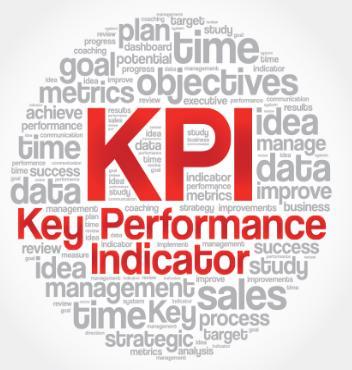
Key Performance Indicators (KPIs) for inbound call centers are established to measure the performance and effectiveness of the call center in delivering quality customer service and achieving business objectives.
The following Standard KPIs are used to track Call Center Performance:
1. Booked Jobs: The total number of Jobs Booked. This metric ensures organizations meet revenue targets by tracking progress toward daily goals. Goal: 100% or more to daily goal & year-over-year increase.
2. % Answered by Brand: Calls answered by Brand directly increase the opportunity to provide First Call Resolution. by comparing the total calls offered by calls answered by brand agents (excludes abandoned calls or overflow to 3rd party shared services) Goal: 90% or above
3. Agent Utilization: Agent utilization signifies the percentage of time spent on phone calls, a critical KPI affecting productivity, agent performance, and customer satisfaction. Goal: 75% Productive
4. Service Level %: In customer support and call centers, "service level" represents the percentage of inbound calls answered within a specified timeframe. Goal: 90% for Demand & Google Calls & 85% for All Other Calls.
5. Unique Booking %: A traditional booking % is the ratio of Booked Jobs to Lead Opportunities. The Unique Booking % measures the total number of Unique Calls (callers initiating a marketing campaign for the first time in the month) divided by the total number of Booked Jobs in Service Titan. Goal: Increase Year-Over-Year
6. Raw Booking %: The Raw Booking % is the total booked jobs divided by all calls (regardless of lead opportunity), providing insights into overall performance trends allowing that can be used in agent coaching to improve performance, enhance CX and generate revenue. Goal: 40% Inbound
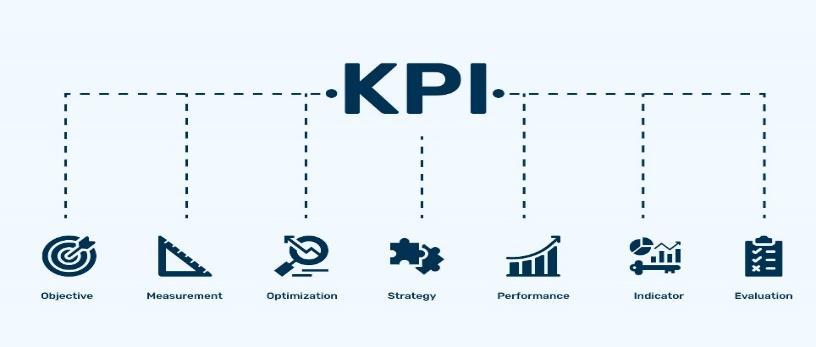
By analyzing call center metrics, we can pinpoint agents needing coaching, improve processes, and replicate top performers' strategies. This approach also involves commending high-scoring agents and assigning roles that capitalize on individual performance.
For more information, refer to the KPIs, Metrics & Reporting folder in the Appendix (Page 60)

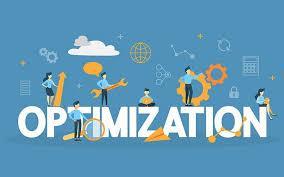
Managing a call center can be complex, but by leveraging technology to handle a portion of the workload, Customer Service Representatives (CSRs) are free to focus more on customer interactions rather than administrative tasks. This not only improves efficiency but also enhances customer experiences, allowing teams to prioritize what matters most helping customers.
There are several optimizations in Talkdesk and Service Titan that once implemented, can significantly improve how call centers operate:
1. Talkdesk AI-Generated Summaries: With less than 4 clicks, Talkdesk can automatically create notes (call summary) & select dispositions (call outcomes), saves CSR’s time and improves accuracy.
a. Learn More: Talkdesk AI Generated Call Summary & Disposition Process
2. Talkdesk Ring Groups: Assigning the right ring groups ensures that calls are routed to the most appropriate agents based on their skills, leading to faster and more efficient responses.
a. Learn More: How to Assign Ring Groups (Queues) Effectively
3. Talkdesk Knowledge Management: Provides agents with quick access to information, helping resolve issues faster and improving training.
a. Learn More: Talk Desk Knowledge Management Setup and User Guide
4. Service Titan Pre-Populated Job Summaries & Tags: Automates job details, reducing booking errors and ensuring technicians have the right information
a. Learn More: How to Set-up Pre-populated Job Summaries, Tags and Priorities
5. Service Titan Zip Code Search Zones: Prevents jobs from being booked outside the service area, reducing cancellations and improving customer experience. (Requires Dispatch support)
a. Learn More: Zip Code Search Zones Enhancement in Service Titan.docx
6. Service Titan Customer Portal: Allows customers to manage their service, reducing non-bookable call volume and increasing convenience for customers.
a. Learn More: Customer Portal Overview


How is a call center team huddle different from a formal meeting?
A team huddle is a brief, informal meeting (usually 10-15 minutes) held at the start of each shift. For call centers with multiple shifts, daily huddles can happen several times a day, ensuring that each team is aligned before they begin work. These huddles typically occur on the call center floor and focus on immediate, day-to-day concerns. The purpose of a huddle is to provide agents with the most up-to-date and urgent information they need for the shift ahead.
This can include:
• Updates on system outages or equipment issues

• Hot topics or challenges for the day, such as new promotions or customer concerns
• Brief performance feedback and focus areas from the previous day such as booked and completed jobs.
• Key metrics or goals for the day, such as booked job goals, calls handled and service level %.
• A quick check-in to address any questions or concerns from the team

In comparison, a formal team meeting is more structured, happening once or twice a month, and typically takes place in a meeting room or virtually on teams with a set agenda. These meetings address larger topics, such as process changes, operational changes, and refresher training. They allow for deeper discussions and team feedback.
How to make meetings effective:
• Have clear objectives to keep discussions focused.
• Share agendas ahead of time, assign time limits to each point, and keep conversations on track.
• Stick to the agenda and avoid going off topic to ensure discussions are productive.

Both daily huddles and formal meetings both play essential roles in keeping call center teams motivated, informed, and working toward shared goals.

Digital leads are an essential part of today's service industry, where customers increasingly turn to online channels to request service or ask questions. This article outlines the importance of digital leads from platforms like Angie’s List, Yelp, and Google and provides practical steps for handling them.
What are digital leads?
Digital leads are customers who use online platforms like Angie’s List, Yelp, or Google to request our services. Instead of calling or visiting people, they prefer using websites, apps, or social media to connect with us.
Why do digital leads matter?
Digital leads are a big part of our growing customer base, and they expect fast, quality service. Responding to them quickly and efficiently helps ensure we meet their expectations and keep them satisfied.
How do we handle digital leads?
1. Team Coverage: Make sure a specific team member is responsible for managing digital leads so nothing slips through the cracks.
2. Get Notified: Set up alerts in Service Titan to notify your team as soon as a new lead comes in.
3. Speed to Lead: Try to respond to these leads within 5-10 minutes to keep them engaged and show we're on top of it.
4. Follow Up: If the customer doesn’t reply, follow up within 15-20 minutes, then again after 24 hours if needed.
5. Personalize Responses: Craft personalized replies based on the customer’s needs and use their preferred method of communication (like text or email).
6. Schedule Quickly: Treat digital leads like phone calls schedule appointments fast and efficiently.
7. Track Everything: Make sure every interaction is logged in to Service Titan and update lead management dashboards with the latest status.
By following these best practices, your team will be better equipped to handle digital leads efficiently, improving both service quality and customer satisfaction.
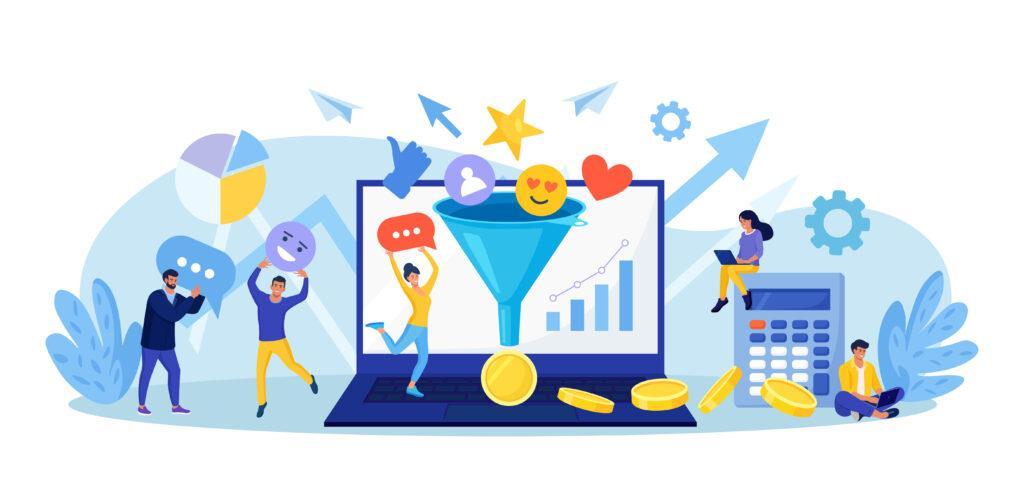
For more details, refer to Digital Leads in the Demand Handling folder of the Appendix (page 60)


The call center representative (CSR) is often the first impression customers have of your company. Delays in answering the phone, responding to digital leads, unnecessary transfers, or complicated processes can ruin the customer experience and drive them to competitors. That’s why it’s essential to train CSRs to handle interactions quickly and confidently, creating a seamless experience that keeps customers coming back.
A minimum of two weeks of training is recommended to equip CSRs with the necessary skills to manage customer inquiries efficiently. If needed, additional coaching can be provided before they work independently.
1. Company Overview and Values:
a. Brand & TurnPoint Mission, vision & values
b. Introduction to the company’s trades (HVAC, Plumbing, Electrical, etc.)
2. Call Handling Process
a. Step-by-step call booking process
b. Inbound, Outbound & Digital Leads Scripting
3. Service Knowledge
a. Detailed information on HVAC, Plumbing, and Electrical systems
b. Understanding of memberships, pricing structures, service fees, and discounts.
4. Technology and Systems Training
a. Introduction to essential software systems (Service Titan, Talkdesk, Microsoft Teams)
5. Performance Metrics and KPIs
a. Understanding of Inbound KPIs and goals.
6. Outbound Call Techniques
a. Best practices for outbound calling, including setting booked job goals.
7. Ongoing Coaching and Support
a. Role-playing and mock call sessions for hands-on practice
b. Shadowing experienced CSRs to learn call flow and customer interaction techniques

To support the training process, a curriculum and a customizable PowerPoint presentation are available. This PowerPoint is designed to complement the curriculum, providing visuals and examples to clarify key concepts. Additionally, a completion certificate template is available for printing upon the successful conclusion of the training
To access these resources, please refer to the Training folder in the Appendix (page 60)



What is a Membership?
Membership plans, also known as Preventative Maintenance Agreements, provide customers with ongoing care and routine maintenance for their HVAC, Plumbing & Electrical equipment. Members benefit from fewer unexpected repairs and energyefficient equipment, leading to long-term savings and peace of mind.
Why are Memberships Important?
As highlighted in the C4LC framework, nurturing customers means growing the Membership Base and maintaining strong relationships with Club Members. Selling memberships not only provides a steady income stream for brands but also strengthens customer loyalty and encourages continuous engagement. This helps create a sustainable cycle of service and customer care.
What Motivates Customers to Buy a Preventative Maintenance Agreement?

Customers are motivated by the opportunity to save money, particularly in today’s economy. Preventative maintenance helps them avoid expensive breakdowns and offers discounts for loyal members. Educating customers on these benefits, especially after an unexpected repair, can increase membership sales. Membership Sales Specialists should follow up with customers after service appointments to discuss the value of becoming a Club member.
How to Explain the Purpose & Benefits of a Maintenance Agreement
When explaining the membership benefits to a customer, tailoring the message to their specific situation, this reduces overwhelm and allows them to see exactly how the membership can benefit them today. Here’s an example for a customer who is hesitant to sign-up due to cost:
Key Benefits:
• Discounts: Members receive exclusive discounts on diagnostic fees and repairs. Often, the savings on just one service can cover the membership cost.
• Save Money: Properly maintained equipment operates more efficiently, reducing energy bills.
• Fewer Surprises: Regular inspections catch small issues before they turn into major repairs.
Best Practices for Selling Memberships:
• Mention the Membership on Every Call: Even if the customer doesn't seem like they can immediately benefit from the membership, mention it briefly anyway. You might be surprised by who is actually interested.
• Build Value First, Then Discuss Price: If you talk about the benefits before mentioning the price, customers are more likely to see the value. Tailor the offer to their needs, like offering two system checks and discounts for just a small additional cost.
o Example: If a customer wants a system check, explain that they can receive two system checks plus discounts for only a small extra fee for the entire year.
• Share Brochures: If a customer needs time to think, offer to send them a brochure outlining the membership benefits. This builds trust and gives them time to consider the offer.
• Assure Flexibility: Let customers know there is no contract, and they can cancel anytime.
❖ Bonus Tip: Offer spiffs to agents who sign new memberships or offer free memberships to customers with new equipment. It’s a win-win opportunity for everyone!



Technicians rely on a steady flow of jobs for the opportunity to generate revenue for our business. The Dispatch Department is the catalyst for driving revenue through maximizing opportunities with a flexible mentality. Because of this, our dispatchers need to be positioned to successfully apply the right tech to the right call as well as enhance our customers experience as part of the Customer 4 LifeCycle (C-4LC™).
A good dispatcher is a strong communicator, multi-tasker, and highly organized individual. The main function of this role is managing technician schedules and dispatching them to scheduled appointments and emergency situations based on location, skill level of the technicians, and facility response guidelines.
The different roles within the dispatch department should be clearly defined by job duties. Not every dispatcher is excellent at every dispatch function. Hiring according to talent, abilities, and individual job description is important to the overall health of the dispatch department.
The dispatcher responsible for placing the jobs booked by the call center on the technician is setting up the business for either success or missed opportunity. For smaller brands, any of the following roles can be combined until growth dictates additional workforce to handle responsibilities.

Customer Experience Coordinator
Job Description: This position is primarily responsible for maintaining regular communication with customers, keeping them informed about the status of their appointments, including any scheduling changes, estimated arrival times, and relevant information.
Skills & Experience:
o High School Diploma or Equivalent (Required)
o 3+ years call center, customer service, sales, or appointment setting
o Excellent communication skills, both verbal and written
o Ability to multitask in a fast-paced environment
o Exceptional customer service and phone skills
o Strong attention to detail with problem solving capabilities
o Proficiency in Microsoft Office and CRM software
Dispatcher
Job Description: This position is primarily responsible for receiving emergency and non-emergency calls, dispatching personnel, and equipment, and providing pre-arrival instructions to callers.
Skills & Experience:
o High School Diploma or Equivalent (Required)
o 3+ years of Dispatch or Customer Service experience
o Previous experience in HVAC, plumbing, electrical services, or construction a plus
o Excellent communication skills, both verbal and written
o Ability to multitask in a fast-paced environment
o Exceptional customer service and phone skills
o Strong attention to detail with problem solving capabilities
o Proficiency in Microsoft Office and CRM software
Researcher
Job Description: This position is primarily responsible for researching calls prior to them being dispatched to technicians. Calls will be assigned based on “right tech, right job” guidelines per existing process. This position assists the Logistics Manager and will serve as a back-up to the Dispatch Coordinators.
Skills & Experience:
o High School Diploma or Equivalent (Required)
o 2+ years Dispatch or Customer Service experience
o Previous experience in HVAC, plumbing, electrical services, or construction a plus
o Excellent communication skills, both verbal and written
o Ability to multitask in a fast-paced environment
o Exceptional customer service and phone skills
o Strong attention to detail with problem solving capabilities
o Proficiency in Microsoft Office and CRM software
Dispatch Manager
Job Description: This position is primarily responsible for organizing and dispatching technicians and service professionals to homes and businesses for repair, installation, or maintenance work. Ensuring these jobs are scheduled quickly and well, matching the right resource to each customer’s needs to achieve revenue goals.
Skills & Experience:
o High School Diploma or Equivalent (Required)
o 2-3+ years of prior Dispatch experience in the home service industry.
o 1+ year Supervisory experience in an HVAC, Plumbing or Electrical industry a plus.
o Previous Talkdesk or Service Titan experience, a plus.

The Dispatch Manager plays a vital role in enhancing customer satisfaction and business growth through efficient and strategic oversight of our dispatch operations. This article outlines the essential personal characteristics and competencies expected of a Dispatch Manager in our organization.

Inherent traits or qualities that influence how individuals behave and interact in various situations.
1. Multitasking in High-Pressure Situations and Adaptable Resilience
a. Inherent ability to handle multiple tasks and emergencies in a fast-paced, high-pressure environment.
b. Maintaining effectiveness under stress and bouncing back recover from setbacks.
c. Natural ability to adapt to changing situations and modify operations for optimal results.
2. Attention to Detail
a. Natural tendency for meticulous attention to detail in various aspects of work.
b. Ensures accuracy and thoroughness in scheduling, dispatching, and overall management of services service management.
3. Innovative Growth Mindset
a. Emphasizing the importance of continuous professional growth and staying updated with industry trends.
b. Creativity in designing incentive programs and initiatives to inspire and drive team performance.

Competencies
Skills and behaviors that are observable and measurable, contributing to successful job performance.
1. Analytical Problem Solving and Decision-Making Skills:
a. Efficiently managing crises with decisive, analytical decision making in high-pressure situations.
b. Applying problem-solving strategies capabilities to develop and implement business strategies and for monitoring performance monitoring.
2. Leadership and Team Management:
a. Building and leading a high-performing, customer centric team and fostering a positive culture of collaboration and continuous improvement.
3. Customer-Centered Focus and Effective Communication:
a. Clear and efficient communication and active listening among various stakeholders.
b. Anticipating and meeting customer needs, offering resolutions, and ensuring customer satisfaction.

The dispatch department is a fast-paced environment. Dispatchers need a variety of hard and soft skills to perform their jobs effectively. Some they have naturally, and others they learn through training courses and job experience. Here are a few qualities typically found in top dispatchers.
Dispatchers must make schedules, plan routes, and keep records to name a few duties. All of this requires exceptional organizational skills. An unorganized dispatcher could spell disaster for a home services company.
Communication
Communication is a big part of dispatchers’ duties. They must be able to communicate effectively with technicians, warehouses, and clients. A good dispatcher should be able to professionally communicate over email and phone
Today, technology plays a huge role in the home services industry, and dispatchers need to know how to use it. Most aspects of a dispatcher’s job, from scheduling to reporting, use comprehensive dispatch software. A dispatcher will need to have technical and computer skills to navigate dispatch software.

There are a lot of things to juggle as a dispatcher, and it can get quite hectic. Being able to multitask and keep on top of everything is crucial to the role. A good dispatcher should know what tasks to prioritize while ensuring everything gets done right and on time.
Being able to adapt to any situation is important as a dispatcher. A lot of unplanned situations can arise, from emergency situations, traffic delays, or bad weather. A good dispatcher is able to quickly come up with a backup plan and act on it. This role requires someone that can think on their feet and respond to situations quickly.


Interviewing is an important step in the employee selection process. If done effectively, the interview enables the employer to determine if an applicant's skills, experience, and personality meet the job's requirements. The ideal candidate is a cool-headed critical-thinker with awesome crisis management skills and the ability to remain calm in highstress situations. Below is a list of interview questions to choose from to help know if an applicant will be right for the Dispatcher position.
1. What inspired you to pursue a career as a Dispatcher?
2. How would you describe your work ethic?
3. What are your greatest strengths?
4. What is your greatest weakness?
5. What is your communication style?
6. Tell me about a work situation where you had to handle a lot of pressure.

7. How do you stay organized when you’re dealing with multiple important tasks?
8. How do you prioritize important tasks or calls in the workplace?
9. Tell me about a time when you had to act decisively without the presence of your supervisor.
10. Can you give me an example of how you handled an upset customer and what you did to resolve the situation?
11. What were some low points or challenges during your last job?
12. How do feel about learning new technology? Can you tell me about the last CRM or software you learned how to master?
13. Have you ever worked with a difficult colleague or boss? How did you handle the situation?
1. Which industries have you Dispatched in previously and how do you feel that your experience transfers to this position?
2. How do you prioritize your tasks as a dispatcher?
3. There is a shortage in the supply chain, and we don’t have the parts needed to complete a technician’s repair. What is your strategy?
4. How have you improved efficiency as a dispatcher in your previous positions?
5. What experience do you have with dispatching software?
6. Describe a time you made a scheduling mistake and how you rectified the situation?
7. What qualities make you stand out from other dispatcher candidates?



Implementing Demand Planning Standards is crucial for ensuring that the dispatch department operates effectively, consistently maximizing opportunities by sending the right technician to the right job. These standards provide a structured framework, with a leveled approach to enhance daily operations, increase conversion, and support business growth.
Overview of the 5 Levels:
This foundational level sets up essential practices for effectively scheduling and dispatching technicians, ensuring timely service delivery and customer satisfaction. Key elements include:

❖ Team Setup and Structure: Organize the team to monitor the dispatch board and communicate with technicians & customers effectively.
❖ Core Dispatch KPIs: Track critical metrics like Cancellation Rate, # of Jobs Scheduled vs. Dispatched, and Daily Revenue Goals.
❖ Leverage Technology: Use technology to handle repetitive tasks, save time, ensure no important details are missed, organize tasks efficiently, and gather valuable customer feedback.
Focuses on improving team performance and leveraging technology to boost overall efficiency. Key components include:
❖ Leadership Development: Identify a strong performer with leadership capabilities to become a Senior Dispatcher.
❖ Advanced KPIs: Track metrics like Callbacks (recalls) and Conversion Rate
❖ Introduce Right Tech, Right Job: Set up & train on using Service Titan Technician custom dashboards to support the right tech, right job methodology.
❖ Service Titan Optimization: Set-up Zip Code search to limit out of area bookings, create a Dispatch Priority List for Call Center to prioritize opportunities, follow standard messaging to set-up customer notifications for enhanced customer communication, and Adjustable Capacity Planning for effective job management.
❖ Daily Huddles: Participate in daily meetings to monitor performance and align with cross-functional teams on business objectives to win the day.
Emphasizes continuous learning and skill enhancement to ensure the team aligns with evolving goals. Key components include:
❖ KPI Tracking and Coaching: Run reports from Power BI, Talkdesk, and Service Titan for performance tracking and targeted coaching.

❖ Daily Huddles Participation: Share dispatch performance data in daily meetings to ensure alignment across departments.
❖ Scripting: Implement Update scripting to keep customers informed of their technician’s arrival and reduce return phone calls.

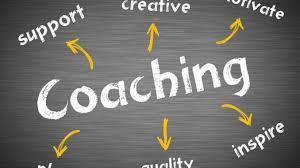
Ensure continued improvement through development and coaching so everyone performs at their best.
❖ Conduct 1.1 Coaching Sessions: Schedule coaching sessions for underperformers, focusing on personalized feedback and guidance to help them improve and achieve their goals.
❖ Implement TP. Logic: This advanced tool can help dispatch teams manage capacity based on forecasted demand over the course of 14 days. Improving job booking availability and prioritizing jobs to achieve revenue goals.
Focuses on leveraging advanced technology and scaling the team to meet growing demand. Key components include:
❖ Specialized Roles: Introduce new roles, such as Customer Experience Coordinator and Researcher, to support growing teams and enhance operational focus and customer satisfaction.
❖ Dispatch Pro: Implement Service Titan Dispatch Pro to boost right tech, right job performance and increase revenue.
❖ Talkdesk: Onboard Dispatch to Talkdesk for a better understanding of Dispatch interactions and analyze data to improve service for internal & external customers.


Implementing these dispatching standards and reviewing them monthly will drive meaningful improvements in efficiency, customer satisfaction, and our capacity to scale Dispatch operations. Here’s how:
• Consistency: Ensures all Dispatchers deliver a uniform level of service, fostering trust and rapport with both technicians and customers.
• Efficiency: Streamlines processes, reduces errors, and boosts conversion rates by accurately matching the right technician to each job.
• Technology Optimization: Maximizes the benefits of tools like Talkdesk and Service Titan, using automation to enhance overall performance.
• Scalability: Simplifies onboarding and training for new team members as we continue to grow.
• Accountability: Leverages KPIs to monitor performance, identify improvement areas, and guide targeted coaching.
These standards have proven to really make a positive difference in the Dispatch department’s day-to-day operations and long-term success.
Download the Demand Handling Planning Checklist today, and start integrating it into your business to experience the difference yourself!

Key performance indicators (KPIs) refer to a set of quantifiable measurements used to gauge a company’s overall longterm performance. KPIs specifically help determine a company's strategic, financial, and operational achievements. By understanding exactly what KPIs are and how to implement them properly, managers are better able to optimize the business for long-term success. Below are the recommended Dispatch Department KPI measurements to determine if goals are being met for the success of the operation.
1. Daily Revenue Goals: A strategic revenue goal by trade that the brand needs to achieve planned growth.
o Why Do We Measure? To establish clear income targets, assess the company's financial health, drive growth, evaluate performance, and optimize resource allocation GOAL: > 100%
2. # of Jobs Scheduled vs # of Jobs Dispatched: Ratio of booked jobs divided into the number of completed jobs. This can be measured by day, week, monthly, quarterly, or annually.
o Why Do We Measure? This comparison helps identify discrepancies or bottlenecks between planned schedules and actual service execution. GOAL: > 90%
3. Cancellation Rate: The number/percentage of booked jobs that cancel within a given period
o Why Do We Measure? Each new potential customer (lead) costs us about (x) dollars. We must be smart and quick to ensure we don't miss out on these chances. GOAL: < 6% (Demand Service)
4. Callbacks (Recalls): The percentage of customers that require a return visit due to workmanship or failed repair in a given time period.
o Why Do We Measure? To track of workmanship or repairs that results in No Charge, Non-Convertible jobs & offer coaching when necessary. GOAL: < 3%
5. Conversion Rate: The total number of jobs converted into sold work exceeds the dispatch fee.
o Why Do We Measure? Helps determine what the technicians did with the job dispatched to them and if they maximized all opportunities.
GOAL:
▪ >70% HVAC
▪ >85% Plumbing ▪ >90% Drains ▪ >85% Electric

A good KPI provides objective and clear information of progress towards an end goal. It tracks and measures factors such as efficiency, quality, timeliness, and performance while providing a way to measure performance over time.

The Dispatch Board gives a quick visual overview of where technicians are and what jobs are scheduled for the day.
Organizing the details on the board gives a clear understanding of the scheduled opportunities and the technicians available to handle them. The following are best practices to bring order and clarity to dispatching for a higher level of success when managing the day.
• Group technicians with a similar skill set in the same section of the board
• Update the technician’s schedule to reflect non-job events:
o Time off
o Meetings
o Training
o Lunch
• The Job Tray method puts the scheduled jobs not yet assigned to a technician in one area.
• Aligning the start and stop times with the technician’s arrival and completion times will accurately reflect their daily route.
Managing the Dispatch Board is a vital function in achieving daily revenue goals. The best planned days are constantly changing, and keeping a pulse on the details of the board allows the Dispatcher to optimize the day.
• Review the Job Tray and identify jobs with Maximum Opportunities.
• Assign, re-assign, or reschedule booked jobs to the right technician.
• Evaluate job status and solve for a resolution:
o Late for an estimated time frame.
o Jobs are running longer than planned.
o Jobs that require an additional appointment.
o Jobs not marked as completed.
• Determine the best route for Maintenance & Sales appointments.
• Ensure jobs are completed and invoice reflects appropriate charges.
Helpful Link: How to use the Dispatch Board


Efficient management of booked jobs and technician routes depends on the CSR and Dispatcher's (DSRs) understanding of the brand's service area. Usually, this zone is restricted to a 60-mile radius, and there might be physical obstacles and other issues that could lead to delays. Below are helpful tips for becoming an expert of a designated service area:
• Learning the service region through zip codes
• Recognizing potential obstacles
• Following best practices to ensure prompt and efficient customer service
It is crucial for CSRs and DSRs to have a thorough understanding of the service region. One way to make learning the area more manageable is to break it down into sections using Zip Codes. For a quick reference, the United States Zip Codes is a convenient online site that provides a printable map, which can be displayed in the Call Center or Dispatch office for easy access.
Some benefits of learning the service region by zip code include:
✓ Avoiding booking appointments outside the designated service area
✓ Improving the accuracy of appointment scheduling and dispatching
✓ Minimizing travel time and maximizing efficiency

CSRs and DSRs can effectively manage booked jobs and technician routes when familiar with the service territory.
As a dispatcher, it's important to know about possible issues that could affect a technician's ability to provide prompt service to customers in a particular service area. These can include traffic congestion, construction work, or security clearances that may differ from one area to the next.
Some potential obstacles to watch out for include the following:
✓ Traffic congestion during rush hours in cities and towns, especially in the morning and evening.
✓ Travel time may be increased in rural areas due to narrower roads and lower speed limits.
✓ Military bases, downtown areas, and gated communities may have specific access requirements or parking limitations.
To effectively deal with potential obstacles, it is recommended to follow these best practices:
✓ Research the specific access requirements for military bases and gated communities before dispatching a job to ensure the technician has the necessary identification or access codes to gain entry.
✓ When working in downtown areas, it's a good idea to research the local municipal parking garages, as well as meter rates and restrictions. Customers can also be a valuable resource for finding authorized parking areas for service providers.
✓ To ensure clarity and prevent future delays, it's important to note any unique details about a customer's location on their service page. This could include parking instructions or access codes, for instance.
Proactively identifying potential obstacles and following these best practices ensures timely and efficient customer service. This, in turn, can improve customer satisfaction and retention.

In the home service industry, 'Demand' refers to someone needing assistance. Think of it like this: customers may request a service appointment if something suddenly breaks or is not working at home. This request is referred to as a 'Demand Call.’ These calls lead to a booked job and help fill the work schedule with ‘Demand Service,’ ensuring that all service technician’s days are optimized.
Understanding Demand
It is essential for the Dispatcher to understand the difference in the types of Demand to manage the day. There are two different types of Demand within the Service Department:
• Demand Service Jobs:

a. Demand Service jobs stem from customers calling in because systems are not functioning properly. These types of jobs tend to convert at a higher rate than Scheduled Services.
b. Jobs get classified by type and urgency, allowing the Dispatcher to identify Maximum Opportunities quickly.
• Scheduled Service:
a. Schedule Service jobs are pre-planned system maintenance or inspections.
b. During periods when Demand Service requests dwindle, Scheduled Services step in to keep the work schedule filled.
c. Although the priority level is typically Low, each customer’s home is unique, and there may be Maximum Opportunities present that could result in a high revenue job.
Understanding these two categories of services proves instrumental in efficiently managing demand each day.
Think of demand as a seesaw, always going up and down. It never stays the same. What makes it go up? Well, several things can do that.
• Bad weather can strain systems, creating a need for repairs or maintenance.
• Marketing efforts make more people aware of a company's services, bringing in new customers.
• Maintenance agreements foster customer loyalty, so they call when something goes wrong with their systems.
All these elements contribute to the daily shifts in demand volume.
Strategic planning is crucial when managing the Demand for the Service Department in any home service business. The Dispatcher must carefully consider various factors that influence daily capacity goals and their impact on meeting the Demand requirements. Some key aspects to consider include:
• Weather
• PTO / Holidays
• Training / Meetings
• Historical Demand Service Volume
After determining Baseline Capacity by department, it is essential to plan the “Demand Need,” a minimum of three days in advance. This proactive planning gives time for the Call Center to achieve the set goals. The Dispatch Manager should review the next two business days daily and adjust as necessary.

In summary, strategic planning is vital for managing the Demand in the Service Department. The Daily Capacity Goal is the target number of jobs or service calls to be completed in a day. While Baseline Capacity is the minimum capacity needed to meet the expected Demand regularly. By aligning these goals and proactive planning, the Service Department can effectively handle the Demand and allocate resources efficiently.
Demand Capacity is a dispatch term that measures the total number of jobs a technician can handle within a business day for Home Service companies.
Identifying a Baseline Capacity is essential for a technician’s work/life balance. Working 12hour days can lead to mental and physical burnout. Insufficient jobs can result in lost wages or technicians having to use their PTO.
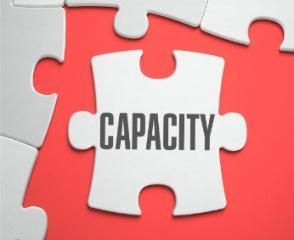
To establish Baseline Capacity, first, determine Daily Capacity by figuring out how many jobs a technician can handle within an 8-hour workday. The following Daily Capacity formula is recommended on average:
• Demand Service: 3.5 Booked Jobs Per Day, Per Technician
• Scheduled Services (Maintenance/Inspection): 4-5 Booked Jobs Per Day, Per Technician (HVAC Maintenance may be determined by # of units)
Baseline Capacity can be calculated by using the following formula:
For example: If 5 technicians can handle 4 booked jobs per day, then:
• Daily Capacity = 5 technicians x 4 booked jobs = 20 jobs per day
• Weekly Capacity = Daily Capacity x 5 working days = 100 jobs per week
• Monthly Capacity = 20 jobs per day x 22 working days = 440 jobs per month
Brand leaders may need to identify an Annual Baseline Capacity for budget planning. This can be achieved by using the following formula:
• Multiply the number of technicians by the established volume of jobs per day
• Multiply the result by the number of working days in a year (usually 260)
• Subtract 10% from the annual capacity to factor in time off
For example: If 5 technicians can handle 4 scheduled services per day, then:
o Annual Capacity = 5 (technicians) x 4 (Booked Jobs) x 260 (working days) = 5,200 Booked Jobs per year
o Baseline Capacity = 5,200 Jobs per year - 10% = 4,680 Booked Jobs per year.

Managing Capacity
Managing capacity allows the Dispatcher to provide the Call Center with a goal of how many booked jobs must be scheduled daily to ensure the technicians work a full day.
Reviewing the following items is necessary when verifying that the available Capacity meets the Demand needs of the day:
✓ Canceled jobs.
✓ Jobs that finished sooner than expected.
✓ Jobs that will take the rest of the day.
✓ Rescheduled jobs
It is best practice to evaluate Baseline Capacity vs. the scheduled Demand Volume every 1-2 hours to ensure the available Capacity reflects the actual need.
Publishing Capacity
The Dispatcher Manager should provide a definitive guideline to the Call Center detailing the number of Scheduled Service jobs necessary to offset the Demand Service volume. All brand leaders can access a sharable spreadsheet/ document with a “daily calendar format” in real-time. This document should distinctly represent the total quantity of Maintenance/Inspection tasks required. Armed with this information, the Call Center can act proactively, executing outbound calls to reach the target goal when inbound demand is low. (Note: The following resources provide ways to publish capacity & can be found in the Appendix: Service Titan Adjusted Capacity Planning SOP, TP. Logic Live Board)
TP.Logic Live Board Example

The Dispatch Team must constantly check and refresh the published Scheduled Service Capacity throughout the day. This action guarantees an accurate tally of necessary jobs booked for the Call Center to achieve the daily goal.

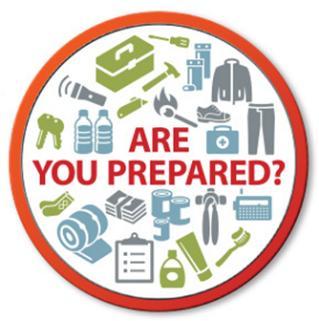
Weather plays a big part in the Demand volume in the Home Service Industry. Weather patterns can determine the Peak and Non-Peak Seasons. When temperatures change drastically in an area, there is a higher need for system repairs. On the flip side beautiful sunny days, people open their windows and turn their heating and air conditioning systems off. The following inclement weather impacts the trade industry, significantly increasing the number of customers that need to repair or replace their systems resulting in Peak Seasons.
• Extreme Hot/Cold: Extreme heat and cold can strain the HVAC system resulting in mechanical failure.
• Ice Storms: Ice buildup on the condenser fan blade can prevent proper operation.
• Hurricanes/Tornados: High winds can cause damage to the outdoor unit (condenser). In addition, power outages and power surges can also cause damage to the electrical components of the HVAC system.
• Extreme Cold: Causes water in the plumbing pipes to freeze, expanding inside, causing them to crack or burst. When the weather warms up, the water will leak from the cracks resulting in property damage.
• Hurricanes/Tornados: High winds can result in trees falling. The tree roots rip from the ground, breaking the plumbing system's outdoor main line/drain line.
• The following weather events can cause power outages increasing the number of customers that need to repair or replace their Generator system.
o Extreme Hot/Cold
o Ice/Snowstorms
o Hurricanes/Tornados
Best practices to prepare for Peak Season?

• Decrease the number of scheduled Maintenance / Inspection appointments to allow the technicians to handle the increased Demand volume effectively.
• Utilize the Dispatch Priority List to reschedule lower-priority jobs.
• Limit or Blackout Times for planned PTO.
Best practices to prepare for Inclement weather?
• Depending on conditions, develop a process for Inclement Weather.
o Establish a backup plan for internet or power outages.
o May need to require all employees to come to work regardless of their scheduled day off. An all-hands-on-deck concept to handle the increase in revenue opportunities.
o Set a plan for employees to work from home.
o Provide laptops or computers for office personnel to work from home.
Best practices to prepare for the Non-Peak Season?
• When the weather is mild, there are little to no inclement weather patterns. Favorable weather conditions cause the Demand volume to decrease.
o Use the Non-Peak Season for maintenance/inspection appointments.
o Send out special offers to non-membership customers for maintenance.

How does the weather impact the Technician?
Extreme weather can have a negative impact on the technician’s ability to perform work and can also be a potential health and safety concern.
• Extreme Hot: High outdoor temperatures can make attics excessively hot, affecting the time it takes for technicians to complete their work.
• Extreme Cold: Cold weather poses risks like frostbite, hypothermia, and breathing difficulties for technicians. Their health and safety must be protected in extremely cold conditions.
• Lightning Storms: Outdoor technicians face the direct threat of lightning strikes, increasing the risk of electrical shocks and injuries. Work may be temporarily halted during storms, causing delays.
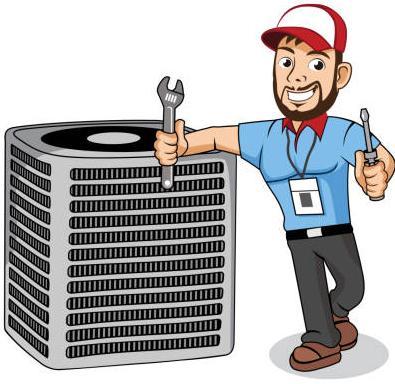
• Flash Flooding: Fast-moving water and unpredictable currents in flash floods can put technicians at risk of being swept away or trapped. Safety precautions and protocols are vital.
• Snow/Ice: Accumulated snow and ice on roadways can create hazardous driving conditions for technicians, impacting their ability to reach service locations safely.
to ensure
• Allow breaks, promote hydration, and encourage cooling down to prevent heat stroke.
• Schedule labor-intensive jobs for the cooler morning hours.
• Provide technicians with protective uniforms and accessories, such as thermal gloves and insulated work boots.
• Stay informed about local weather conditions to plan jobs accordingly and minimize risks.
To ensure the well-being of technicians, it is important to proactively address and mitigate the health and safety risks associated with various weather conditions.


In 2024, the number of incidents involving our technicians getting bitten by a customer’s pet has now more than doubled when compared to 2023. Injuries range from surface wounds to those severe enough to require surgery. To prevent safety incidents and ensure clear, consistent communication that keeps our team and business safe, we are implementing updated Pet Safety protocols during the Dispatch process.
Messaging & Scripting Guidelines
To ensure we effectively communicate with all customers whether they prefer text messages or only have landlines we are adding pet safety messaging in two ways:
1. Courtesy Call (30-45 minutes before technician arrival)

a. Script: “Do you have a dog or any other pets we should be aware of at home? If so, we ask that they be secured in a separate room or area, particularly if we need access to the backyard. This is to ensure the safety and comfort of both your pet and our technician."
b. Action: Make sure the technician is aware that there is a pet. Note in the job summary, for example “Alert: DogBackyard”
2. SMS Dispatch Notification (Sent automatically via Service Titan)
a. This message will be sent to all customers with SMS enabled, when the technician is in route (in Dispatched status) to the customer’s home: “For your pet's safety and the safety of our technicians, please ensure that all pets are safely restrained for the duration of your appointment."
Technician Best Practices
• Call the client rather than knocking on the door or ringing the doorbell: Many dogs get excited when they hear someone at the door. Calling ahead to alert the owner can create a calm environment before you enter the home.
• Do not approach any pet: It is best to ignore pets and avoid direct eye contact. Engaging with the client or taking a moment to check your phone allows the pet to adjust calmly without feeling the need to react immediately.
• Trust your instincts: If you arrive at a home and dog is not leashed, or work area is covered with litter boxes, you have a right to explain your discomfort and give customers opportunity to correct, reschedule once problems are resolved, or cancel job altogether. Our employee's safety is #1
1. Q: Why do I need to restrain my pet?
A: This is to ensure your pet’s safety and to allow our technicians to focus on delivering high-quality service.
2. Q: What if I forget to restrain my pet?
A: Technicians may need to wait until your pet is safely restrained, which could delay your appointment.
3. Q: My pet is friendly. Do I still need to restrain them?
A: Yes, even friendly pets can become excited or curious around new people and tools, which could pose a risk to both the pet and the technician. Restraining your pet ensures the safest and most efficient appointment for everyone involved.
4. Q: How should I restrain my pet?
A: Your pet can be placed in a secure room, crate, or on a leash whatever method is most comfortable for them. The goal is to keep them safely away from the work area for the duration of the appointment.

Scheduling conflicts due to emergencies are a common issue in the Home Services business. Proactive measures from the Dispatch Team can reduce cancellations and prevent appointment drop-offs from customers. Often, cancellations arise from unmet expectations that can be within a brand’s control. Industry recommendations are to maintain the monthly cancellation rate below 10%. Here are a few standard operating guidelines that will minimize the number of customers that cancelled:
1. Ensure the Dispatch Team communicates the technician's estimated arrival time to the customer throughout the day. Regular status updates on appointments can significantly improve customer satisfaction.

2. Implement a Rescheduling Process for the Dispatch Team to offer a discount on services in exchange for customers volunteering to change their appointment to a later date. This approach gives customers a voice, enhances their experience, and allows emergency demand calls to run on the same day.
1. Implement a Dispatch Priority List to categorize jobs based on their priority level for efficient scheduling and rescheduling, ensuring decisions are based on urgency. This strategic approach helps prevent high-revenue opportunities from going to competitors who offer faster service.
2. Implement the 'Right Tech, Right Job' strategy. This will lower the incidence of prolonged jobs due to underskilled technicians, reduce no-charge callbacks, and free up capacity for new lead opportunities.
Cancellations can have a negative impact on service industry operations and customer satisfaction. While some cancellations are unavoidable, others can be prevented by having a standard operating procedure to meet customer expectations.
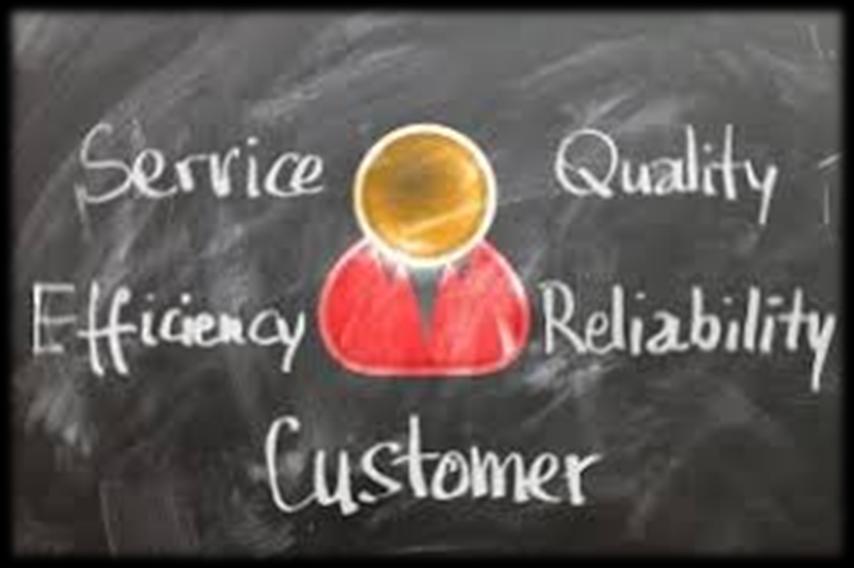

The Priority List shown below is part of the Maximum Capacity Scheduling process. Maximum Opportunity Scheduling allows the Dispatcher to select the jobs with the highest revenue opportunity. When no bandwidth is available to assign more jobs to technicians, the Dispatcher can use this list when looking for volunteers to reschedule booked jobs with lower revenue opportunities. The list also directs the CSR on when to schedule the booked job.
• Schedule a pre-Sold job with guaranteed revenue before a job with no identified value.
• The Call Center should book High Priority Jobs even if there is no available capacity.


Download the template today and get started customizing for your brand!


Every trade can benefit from identifying Maximum Opportunities (jobs with a high revenue potential). Providing the call center with a list of these jobs serves as a guide for customer service representatives (CSR) to ask the correct questions and “Tag” these booked appointments in the CRM. This, in turn, enables the Dispatch team to assign the most suitable technician for the job. Here are a few Maximum Opportunity Identifiers for the technician/plumber/salesperson to explore while onsite in the customer's home.
➢ Equipment Replacement / Upgrade
• 8 - 10+ Years Old: On average, HVAC systems have 8-10 years of lifespan. When an HVAC unit reaches this age, it's important for the technician to inform the customer about the nearing end of its life cycle and recommend budgeting for system replacement.

• Natural Gas / Propane Homes: If the customer's home is fueled by natural gas or propane, the technician can recommend upgrading the HVAC system from an electric heat pump or electric furnace to a more energy-efficient gas furnace or dualfuel system.
➢ Replace Existing Ductwork
• Original Ductwork: Properly functioning ductwork is essential for the HVAC system to ensure adequate airflow and efficient operation. Aging ductwork can deteriorate and develop leaks, reducing airflow to the vents and causing the HVAC system to work improperly. This can result in a shorter system lifespan and costly repairs.
• Hot/Cold Areas in the home: If there are comfort issues in certain areas of the home (hot or cold spots), home renovations or changes to the surrounding environment may require duct modifications or adjustments in the HVAC system to ensure proper airflow and temperature distribution.
➢ IAQ
• Customer Allergies/Asthma: Customers with allergies or asthma can benefit from indoor air quality products like ionizers, high-efficiency air filtration systems, and UV bulb products. These products help remove pollutants from the air, providing purified indoor air and reducing triggers for allergies or asthma symptoms.
• Pets in the home: Customers with pets experience higher indoor air pollution due to pet dander and fur. Indoor air quality products can effectively remove these impurities and improve the air quality for these customers.
• Excessive Dust: Excessive dust in a home can be caused by factors like leaking ductwork, carpeting, crawlspaces, and pets. Installing indoor air products and addressing ductwork issues can help reduce dust accumulation and improve indoor air quality.

➢ Re-Pipe (Water / Drain)

• Home 20-30+ years: Homes built over 20 years ago may need repairs or replacements of major components, such as water and drain lines, to prevent system failures and property damage. Aging materials and environmental factors can cause cracks and breaks, posing health and safety risks. Regular maintenance and upgrades are essential for older homes to ensure long-term functionality and safety. (Note: The Property Data function in Service Titan offers a convenient overview of the year-built information for homes.)
• Orangeburg Pipe (Home built 1945 – 1972): Orangeburg Pipe, a drain piping material used during World War II, is prone to deterioration. Many homes still have this type of piping, which can lead to recurring drain issues. Homeowners with Orangeburg Pipe should consider a drain re-pipe to prevent health and safety concerns and avoid further property damage.
➢ Homes with Natural Gas/Propane
• Tankless or Hybrid Water Heater: Homeowners with natural gas or propane fuel sources can upgrade their electric water heater to a more energy-efficient tankless or hybrid water heater. This upgrade provides improved energy efficiency and performance for their hot water needs.
• Gas Grills/Outdoor Kitchens: For homeowners with a natural gas or propane fuel source, the technician can inspect existing gas lines connected to BBQ grills or outdoor kitchens, provide repair or replacement estimates if needed, and discuss gas line installation options for those without existing lines.
➢ Water Heaters are over 8 - 10+ years old
• Electric or Gas Tank Heater: The average lifespan of a water heater is around 8 to 10+ years. Replacing an existing water heater that is reaching the end of its life cycle can prevent potential water damage, reduce energy consumption, and ensure a reliable hot water supply for years to come. Upgrading to a new water heater offers improved efficiency and peace of mind.
➢ Water Heater is less than 8 years old
• Water Treatment: Homeowners can benefit from in-home water treatment and filtration systems, even if their water heaters are under 8 years old. Installing a water filtration system helps prevent plumbing issues by reducing minerals, heavy metals, and chemicals, which can cause corrosion and damage to pipes and appliances. This extends the plumbing system’s lifespan and ensures cleaner and healthier water throughout the home.
Electrical
➢ Generator
• Customer Health Concerns: Customers with health concerns, such as a family member requiring oxygen, can benefit from a whole-home generator. This ensures uninterrupted power during outages, supporting essential electrical functions for their well-being and peace of mind.

• Natural Gas/Propane Homes: Homes with natural gas or propane can have a whole-house generator for uninterrupted heating, cooling, and essential appliance power during outages, providing peace of mind and continuous electricity.
• More than 1500 hours of use: If a whole-house generator has been used for over 1500 hours, homeowners should consider replacement to prevent property damage and maintain a safe and reliable backup power supply.

➢ Panel/Rewire
• Homes built over 20-30 years: Upgrading electrical panels in older homes ensures a steady flow of electricity, prevents appliance burnout, reduces safety risks, and decreases energy consumption. Replacing old outlets and lighting fixtures further enhances safety and efficiency.
➢ LED Upgrades: Switching to LED lighting offers residential and commercial client’s significant benefits. LED lights are highly energy-efficient, reducing energy consumption and lowering utility bills. They are also safer, mercury-free, and shatterproof, making them reliable and eco-friendly lighting options. By upgrading to LED lights, clients can enjoy long-term cost savings and contribute to a more sustainable future.
➢ Natural Gas / Propane Homes – Homeowners with natural gas or propane fuel can enhance their homes by installing a natural gas (NG) or liquid propane (LP) log set or fireplace. These systems provide reliable heat during power outages while being eco-friendly and safer than wood-burning alternatives. NG/LP log sets and fireplaces offer convenience, efficiency, and a cozy atmosphere for the home.
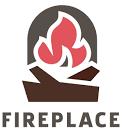
➢ Gas Log / Fireplaces over 10 years old – Homeowners with gas log sets or fireplaces over 10 years old can benefit from upgrading to a newer system. This upgrade offers improved efficiency, smart controls, better heat management, and enhanced safety features. With a newer system, homeowners can enjoy a more convenient and enjoyable fireplace experience while ensuring their home stays cozy and warm.
Note: Setting up “Tags” in Service Titan streamlines the identification of Maximum Opportunities for future appointments and enables the Dispatch team to easily identify additional opportunities beyond the customer's initial service needs.

There are several things to consider before assigning a job to a technician. The Dispatch Department should understand the job requirements and the strengths of each technician. This way, the Dispatcher can increase conversion rate and boost revenue by matching the job with the best-suited technician.
The dispatcher should consider the following factors to be familiar with each technician's skills and abilities.
• How much revenue does each technician generate per job type?
• The technician’s average sale per job type.
• The specific skills of the technician.
• The special tools in technician’s van.

To identify the top technicians, the dispatcher must evaluate their recent performance. A recommended approach is to analyze data spanning 14 to 30 days to gain insights into any noteworthy patterns or trends. To identify top performers or "Hot Hands,” the dispatcher should look at the following:
• Highest Revenue
• Highest Average Sale
• Highest Conversion Rate
By relying on data rather than emotions, this process eliminates subjective biases when choosing the ideal technician for the job. It leverages objective information to determine the most suitable candidate based on their qualifications and track record. Note: A helpful tool is the Nexstar Technician Score. It uses a formula to determine a technician’s score, aiding in making the right job assignments.
After determining the players on the field, the Dispatchers must evaluate every booked job to determine what Maximum Opportunities are present at each customer’s location. (see Maximum Opportunities article) Before deciding on the right technician, reviewing the following areas is recommended.

• What skill is required to diagnose the issue and complete the repair?
• What Maximum Opportunities are present?
• Are Specialty Tools required?
• What is the customer service record history?
• Are there any unsold estimates for Service or Sales?
• Were there recent repairs or replacements?
• Does the customer have a preferred technician?
Considering all the above factors allows the Dispatch Department to assign the appropriate technician for each job. Should
After determining the players on the field, the Dispatcher must evaluate each service call for Maximum O

Efficient routing is crucial in the Service Industry as well as knowing when and how to prioritize it. To be a successful Dispatcher, it is necessary to learn to optimize service routes for both high and low-revenue jobs to maximize revenue time in the field.
Service businesses can grow by reducing the time technicians spend driving to and from job sites. However, optimizing routing can be difficult, especially when high-revenue opportunities are involved. While optimizing routing is important, it's crucial to prioritize jobs with maximum revenue opportunities before being efficient in routing technicians
➢ High-Revenue: Optimized routing may not be the most effective solution for high-revenue opportunities, such as Demand Service Jobs. Dispatchers should select “The Right Tech for The Right Job” in these cases before considering the route. Below are some examples of High-Revenue Jobs:
• Water Heater Replacement
• No Air Conditioning/ No Heat Service Call
• Mainline Drain Clog
• Maintenance Inspection (10+ Aged Equipment)
• Main Electrical Panel Box Replacement
• Inoperable Generator

For booked jobs with high revenue opportunities, the dispatcher should select the technician best suited to maximize the revenue possibilities for that demand call. This may result in choosing a technician located further away from the job site, even if they may need to drive a bit longer to get there.
➢ Low-Revenue: These jobs have a lower chance of converting into revenue, so it's best to schedule them with optimized routing. This lowers fuel costs and allocates more time to developing strong customer relationships. The following are some examples of Low-Revenue Jobs:
• Maintenance/Inspections (New - 5 Years Old)
• Warranty Jobs
• Sales Leads
Knowing where things are located within the service area is beneficial when Dispatching. This information can significantly impact routing decisions and enhance revenue opportunities. Some key factors include the following:
• Where does the technician live? Knowing the technician's home address can help dispatchers assign jobs more effectively and flexibly, such as adding emergencies or reassigning jobs near the end of the business day.
• Where are the vendor warehouses? Being aware of their whereabouts in relation to the technician’s job site can help select the nearest parts house. Selecting the vendor closest to the job can improve customer experience by minimizing job delays and increasing efficiency.

No matter the distance a technician needs to drive, technology can help find the best route quickly:
• The Dispatcher can improve routing by reviewing Waze to identify high-traffic areas and adjust routing accordingly.
• Use zones to assign technicians to specific geographical areas to reduce travel time and fuel costs.
Note: Service Titan offers features that will optimize routes in real-time by considering the technician’s location, availability, and skill set. For more information, see the Use Optimize Technician Route document.

Lastly, optimizing technician routes can improve appointment arrival times and improve customer satisfaction. The following 3 best practices can help the Dispatch Department “Win the Day”:
1. Call the Parts House before dispatching a technician to ensure the necessary materials are available for pickup. Also, confirming that the materials are available before the technician leaves the job site can help minimize job delays as well as reduce wasted time and resources.
2. By adding the technician's home address to the CRM, it becomes possible to choose the most efficient routing options for them throughout the day.
3. For brands that cover a large area, using Zones in Service Titan and traffic apps can save on travel time and fuel costs, resulting in more efficient operations.

1. Service Titan - ServiceTitan is a cloud-based software platform built for trades businesses. ServiceTitan gives contractors the tools they need to run and grow their business, manage their back office, and provide a positive customer experience. You will use this program for:
a. Booking Jobs
b. Reviewing Customer/Location Records
c. Booked Jobs Reporting
i. Login: https://enterprise-hub.servicetitan.com/
ii. Training Courses: https://servicetitan.myabsorb.com/#/dashboard
2. Talkdesk - Talkdesk is a cloud-based call center solution that helps businesses improve customer satisfaction while simultaneously reducing customer support costs. It provides interactive voice response (IVR), skills-based routing, advanced dashboard reporting and a knowledge base system You will use this program for:
a. Answering Customer Phone Calls
b. Real-time Performance Monitoring
c. Agent Utilization Reporting
i. Login: turnpoint.mytalkdesk.com
ii. Training: Talkdesk Onboarding Guide
3. Power BI - Power BI is a collection of software services, apps, and connectors that work together to turn unrelated sources of data into coherent, visually immersive, and interactive insights. You will use this program for:
a. Ongoing Business Metrics
i. MBR Dashboard Live -> Pages: Demand Handling & Demand Planning
ii. Talkdesk Dashboard -> Pages: Brand Summary, Agent Information & Phasing
4. Kronos/UKG – Kronos UKG is a cloud-based software platform that provides workforce management and human resource management services. You will use this program for:
a. Submitting Timesheets
b. Reviewing Schedule Adherence
c. Approving PTO
i. Login: https://secure2.yourpayrollhr.com/ta/MGH7025.login
5. Microsoft Teams - Microsoft Teams - Microsoft Teams is a business communication platform offering workspace chat and videoconferencing, file storage, and application integration. You will use this program for:
a. Team Member or Cross Functional Chats
b. Collaborative Video Meetings
c. Conference Calls
i. Training: Microsoft Teams Training Video
6. Qualtrics - Qualtrics is a web-based survey tool to conduct survey research, evaluations, and other data collection activities. You will use this program for:
a. Net Promoter Scores
b. Follow-up on Detractors
i. Login: https://turnpoint.qualtrics.com/Q/MyProjectsSection
ii. Training: Training Deck

1. Google Guarantee
a. Google Guarantee is a verification service designed to support local businesses and prevent fraudulent services.
c. Website: https://support.google.com/localservices/answer/7549288?hl=en
2. Angi
a. Angi is an online directory that allows users to read and publish crowd-sourced reviews of local businesses and contractors.
b. Website: https://www.angi.com/
3. Yelp
a. Yelp is a popular online directory for discovering local businesses.
1. TurnPoint
a. Website: https://turnpointservices.com/
b. Revenue Ops Team
i. Matthew Zoeller; SVP of Revenue Operations matthew.zoller@turnpointservices.com
ii. Joe Bradley; VP of Revenue Operations Joe@turnpointservices.com
iii. Ivy Gamboa; Sr. Manager of Sales Channel Operations Ivy.gamboa@turnpointservices.com
iv. Thomas Brittain; Sr. Manager of Sales Channel Operations Thomas.brittain@turnpointservices.com
v. Anna Portman; Manager of Demand Handling & Demand Planning Optimization aportman@turnpointservices.com
vi. Sunshine Pagán; Manager of Demand Handling & Demand Planning Optimization sunshine@turnpointservices.com
For Outages or Technology Issues:
1. Login to the TurnPoint IT Client Portal
2. Create “New Ticket”
3. Select Request Type:
o IT Pro Desk
o Service Titan
o Talkdesk
4. Provide all the required information, including a detailed description & screenshots when applicable and save.
Helpful Resource: IT ProDesk Client Portal Work Aid.pdf


Absolute Abandoned Percentage (ABA)
This refers to the percentage of all calls where the customer selected an option in the IVR but hung up before reaching an available agent. This data comes from Talkdesk.
After Call Wrap (ACW)
After-Call-Wrap is the average amount of time an agent takes to wrap-up a call.
Agent
This is an individual at a call center who is appointed for answering customer inquiries. Another name for a call center agent is a customer service representative (CSR)
Agent Status
This refers to the point in time which depicts the call center agent’s work status in Talkdesk, i.e. Available, On a Call, After Call Wrap, Away, etc.
Agent Utilization
Call center agent utilization is the percentage of time an agent spends in a productive state, either on a call with a customer, available to answer a call or wrapping up a call. It measures where agents are spending their time, which is critical for meeting service level goals and maximizing operational efficiency
Answering Service
A team of agents that work outside of the brand, at a support call center. They handle after-hours & overflow calls when brand agents are not available.
Average Handle Time (AHT)
This is measured right from the time an agent begins the interaction with the customer, including the hold time, talk time, and ACW. Also referred to as “Average Call Time”.
Booked Jobs
The number of jobs created in a certain period, specified by a Job Number in Service Titan. These jobs are booked through any channel (Inbound Call, Outbound Call, Manual Booking, Schedule Engine, Digital Lead, etc.)
Booking %
This measures the number of Booked Jobs in Service Titan divided by the number of Unique Inbound calls.

This is a process designed to ensure that each call is routed to the correct agent based on role or skills. It is also set up to direct calls to the afterhours/overflow answering service after a specific period has lapsed.
Interactive Voice Response is a telephony menu system that enables the dial pad for identification, segmentation, and routing of callers to the most appropriate agent within your team.
Knowledge Management is the process of creating, sharing, using and managing the knowledge and information of an organization.
A Key Performance Indicator is a measurable value that demonstrates how effectively a contact center is achieving key business objectives.
Quality Assurance is the process of measuring the overall performance of agents and then using that data to determine if the level of service meets customer expectations. The data gathered is used to make improvements to processes to optimize customer experience.
Workforce Management is a combination of processes that maximizes performance levels and competency for an organization. It includes all the activities needed to maintain a productive workforce, such as field service management, human resource management, performance and training management, data collection, recruiting, budgeting, forecasting, scheduling, and analytics.





